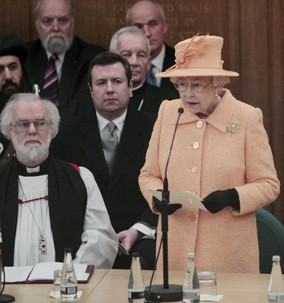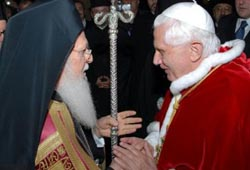 Saint Andrew is the first of the 12 Apostles called by Jesus to follow Him. Today is his feast day, the day traditionally remembered as the day of his death.
Saint Andrew is the first of the 12 Apostles called by Jesus to follow Him. Today is his feast day, the day traditionally remembered as the day of his death.
Category: Ecumenism
Queen Elizabeth II’s address to the 9th General Synod of the Church of England: face the challenges or else…
It’s funny for Catholics to hear of the Queen being the head of the Church of England. But she is. Anglican way of doing things is foreign to my experience and so I am intrigued by what I read and hear about the CofE. She gently reminds the bishops and assembled laity that there are crucial challenges to face and exhorts them to heed Saint Paul. The Queen also dares to mention the recent visit of Pope Benedict to England in that protestant hall. As a point of contrast, read through the following address Her Majesty gave today to her ecclesial body: there’s a distinct difference in content and style between what is said by the Queen and how the Pope would say things. We need to pray that the Queen and her family come home to the bosom of Mother Church.
Your Graces, The
Convocations of Canterbury and York, duly called together in obedience to Our
Royal Writs, are on this day joined together in accordance with the Synodical
Government Measure 1969 and the House of Laity is added to them in accordance
with that Measure, so as to constitute the ninth General Synod of the Church of
England.
Those who serve the Church of England in its public ministry are
required to affirm their loyalty to its inheritance of faith as their
inspiration and guidance under God. They also declare their commitment to
bringing the grace and truth of Christ and making him known to those in their
care.
The opening of a new Synod is a moment when we can all give thanks for
the witness of those who have gone before, and pray for wisdom as you seek to
balance change and continuity in the decisions that lie ahead of you.
Next year
will see two important anniversaries. It will be four hundred years since the
publication of the Authorised Version of the Bible commissioned by King James,
and two hundred years since the foundation of the National Society for
Promoting Religious Education. Both developments had a lasting impact on the
life of the Church and the nation.
5 “distressed” bishops moving to full communion with Rome
The Boston Globe ran a story today, “UK Catholics say 5 Anglican bishops converting,” emphasing these 5 as disaffected, distressed, defectors for political reasons: homosexually inclined and female clergy. It could be, however, that these 5 desire to follow Christ in the true Church he founded, and the bishops acknowledge this fact. Of course, one never knows what the exact back story really is because the information is filtered through many layers before the print media goes to print. The statement of the five bishops can be read here and if you are interested in the Forward in Faith groups, see their website.
Eleuterio Fortino, RIP: the soul and motor of the Christianity Council at the Vatican
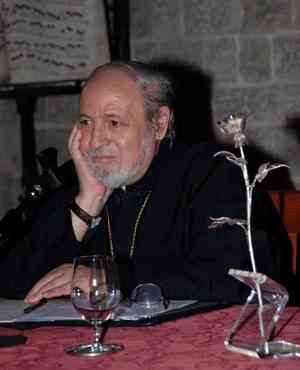 On 22 September 2010, a giant in the world of
On 22 September 2010, a giant in the world of
ecumenism and Eastern Christianity died after living with illness. No one can
doubt the sentiment expressed by the Pope saying that Monsignor Fortino had a “generous
commitment with intelligence and passion at the service of unity.” The Pope
last saw Monsignor Fortino on June 28 with the delegation of the Ecumenical
Patriarch Bartholomew I. A telegram was sent through his secretary of state,
Cardinal Tarcisio Bertone, honoring the life of the undersecretary (third in
charge) of the Pontifical Council for Promoting Christian Unity, who focused
particularly on relations with the Orthodox Churches.
Wuerl named delegate for Anglicans entering full communion with the Catholic Church by CDF
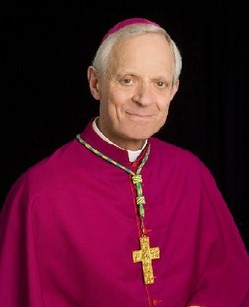 The Archbishop of Washington, Donald W. Wuerl, STD, 70, has been delegated by the Congregation for the Doctrine of the Faith to be the principal guide for those Anglican/Episcopalian clergyman seeking full communion with the Catholic Church, and ordination as a priest.
The Archbishop of Washington, Donald W. Wuerl, STD, 70, has been delegated by the Congregation for the Doctrine of the Faith to be the principal guide for those Anglican/Episcopalian clergyman seeking full communion with the Catholic Church, and ordination as a priest.
Responding to an Episcopal priest on giving communion to a dog
The other day I made a post on this blog about a Canadian
woman priest giving Communion to a dog. A reader of the Communio blog, Lydia
wrote to me saying:
I am a priest in the Episcopal Church in the US.
The Anglican Communion does not have priestesses. I am sure that you know
that. Perhaps you are just being sarcastic.
Personally, I would rather have my
Church known for giving communion to a dog than for the fact that many of my
priests molested children, in countries all over the world, and that
my Bishops did all that they could to ignore complaints about the abuse,
to hide the problem, and to protect the offending clergy.
My response to Lydia
The dictionary defines a priestess as a female priest. It’s a perfectly good
English word; in fact, the Anglican C.S. Lewis wrote an essay called, “Priestesses
in the Church.” If the word “priestess” has a strangely non-Christian
sound, perhaps that is because in churches that claim apostolic succession,
there is no precedent for female priests. As Lewis pointed out, there have been
many religions with female priests (priestesses), but these religions are very
different from Christianity as it has been known for 20 centuries.
In any case,
the word “deaconess” is not considered offensive, so why should
“priestess” be so considered? If masculine imagery for divine transcendence
needs to be balanced by feminine imagery of divine immanence, why not say that
priest and priestess together represent the divine more fully, like Yin and
Yang? My impression is that many modern Anglicans (including women
clergypersons) think on those lines. So why fight about the sound of a word
when its substantive meaning is considered OK?
As for the Catholic Church being
“known for” molestation of children and minors: well, the Anglican
Church in Canada and Australia has been racked by similar problems, particularly
in residential schools, with some dioceses being nearly bankrupted. I am saddened
by the Anglicans’ troubles since the attacks on their schools is an indirect
form of anti-Christian persecution at the hands of a hostile state. As such,
this abuse hysteria threatens us all because it is premised on the assumption
that the sins of a few abusive clergy should be avenged on the entire Body of
Christ. In the case of any other group besides the clergy, this would be
considered unjust prejudice and overreaction.
Statistically speaking, Catholic
priests are no more likely to molest than ministers of other religions; it’s
just that we are a much larger church and that our dioceses are legally set up
as a corporation sole, thus inviting crippling lawsuits and lots of bad
publicity. That said, I do agree that we Catholics are not in a position to
cast any stones on the sexual abuse issue. And so this blog has not done so.
Gross
liturgical abuses and irreverence are a different sort of issue. These
liturgical-sacramental aberrations are public acts done in an official
capacity, not secret sins or obvious crimes. And, in fact, I do emphatically
criticize and abhor similar liturgical abuses among Catholics and wish that
more Catholic parishes had the reverence and decorum to be found in many
high-church Episcopal parishes. It’s not a matter of either side of the
Reformation divide being free of sin or failure: it’s just that without an
authoritative center of communion and teaching and practice, Anglicanism can’t
easily set any parameters for legitimate diversity within itself. And
Archbishop Williams himself would sadly admit that that is unfortunately the
case.
Fr Robert Taft advocates ecumenical scholarship & theology as a new approach to restore communion among the churches of East and West
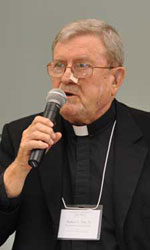 The
The
Roman Catholic and Eastern Orthodox churches should own up to their
past misdeeds and work to restore communion, according to Archimandrite Robert F.
Taft, SJ.
Fr. Taft, a Jesuit priest of the New England Province and professor emeritus of the history of Byzantine Liturgy at the Pontifical
Oriental Institute in Rome, said that the rift between the churches was
sustained primarily by offensive actions–not theological differences.
He delivered “Perceptions and Realities in Orthodox-Catholic Relations
Today,” on June 28 at Fordham University.
“The main problem that we Catholics and Orthodox face in our ecumenical
dialogue is not doctrine but behavior,” Fr. Taft said. “The issue is
not that Catholics and Orthodox do not know how to pray and believe and
live Christianity in the right and true apostolic way. The problem is
that we do not know how to act.”
He
pointed to Catholic “uniatism”–aggression against another church–as a
major problem blocking fruitful dialogue between the religions. He
added that although the Orthodox faith has been victimized, it also
refuses to admit its own misdeeds.
Fr. Taft advocated a system of “ecumenical scholarship and theology”–a
new way to study Christian tradition that seeks to reconcile and unite,
rather than to confute and dominate. To accomplish this, the Catholic
and Orthodox churches must recognize one another as historic apostolic
sister churches, he said.
The
point of this new ecumenical theology is not that Catholics and
Orthodox never disagree. “What it does mean, is that at the official
level, disagreements can be discussed truthfully and courteously,
without invective, rudeness, and slander,” Fr. Taft said. [Fordham
University]
NT Wright to retire
The Right Rev’d Nicholas Thomas (NT) Wright, 61, Anglican bishop of the Diocese of Durham, announced his retirement effective on August 31, 2010. Wright has been the Lord Bishop of Durham since 2003. He’s an Oxford educated scholar of the New Testament. He’ll be taking a professorial position at the University of Saint Andrews, Scotland.
Blessed Osanna of Kotor
 God of compassion, enkindle anew in our hearts the
God of compassion, enkindle anew in our hearts the
love of your cross. By the life and prayers of Blessed Osanna, who suffered for
the unity of the Church, may we become sharers in both your passion and your
glory.
Blessed Maria Gabriella Sagheddu: Apostle for Spiritual Ecumenism
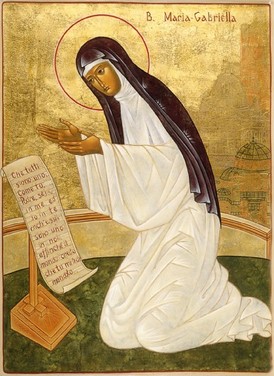 Lord God, eternal Shepherd, You inspired the blessed virgin, Maria Gabriella, generously to offer up her life for the sake of Christian unity. At her intercession, hasten, we pray, the coming of the day when, gathered around the table of Your word and of Your Bread from heaven, all who believe in Christ may sing Your praises with a single heart, a single voice.
Lord God, eternal Shepherd, You inspired the blessed virgin, Maria Gabriella, generously to offer up her life for the sake of Christian unity. At her intercession, hasten, we pray, the coming of the day when, gathered around the table of Your word and of Your Bread from heaven, all who believe in Christ may sing Your praises with a single heart, a single voice.
Blessed Maria Gabriella, Sardinian by birth in 1914, she died a Trappistine nun in 1939 at Grottaferrata, having entered the monastery four years earlier. Taking up the invitation to work for spiritual ecumenism among Christians from Father Paul Couturier who stressed that all Christians must learn to pray together for unity in union with Jesus’ own prayer for the same (Jn 17). Couturier advocated a spiritual unity founded on common prayer, charity, friendship, mutual forgiveness and humility which precedes doctrinal and hierarchical unity.
Father Couturier’s work found a natural habitat in the monastic life which then became fruitful among the wider church (he called the latter the invisible monastery). As a side note, Couturier was greatly influenced by the his work in Lyon, France and by Dom Lambert Beaudoin and the monks of the Belgian abbey of Amay-sur-Meuse (now at Chevetogne).
Blessed Maria Gabriella’s offering of self in 1938 for the spiritual ecumenism made known by Father Paul Couturier was a renewal of the same offering made on the day of her monastic profession of vows: not only to give her early life for Christian unity also to die for unity. This self-gift was closely connected to the notion that the profession of monastic vows is not isolated from the Church universal but deeply at the center of it because of the desire to totally give oneself to God. It is THE reversal of the sin of disunity that is based on ego and not on personal conversion.
Pope John Paul II beatified her on January 25, 1983. Blessed Maria Gabriella is buried at the Trappistine abbey of Our Lady of Saint Joseph at Vitorchiano (near to Viterbo) where her original community moved. She is known as the Apostle for Spiritual Ecumenism.
I recommend to you Sister Martha Driscoll, OCSO’s A Silent Herald of Unity: The Life of Blessed Maria Gabriella Sagheddu (Cistercian Publications, 1990).
